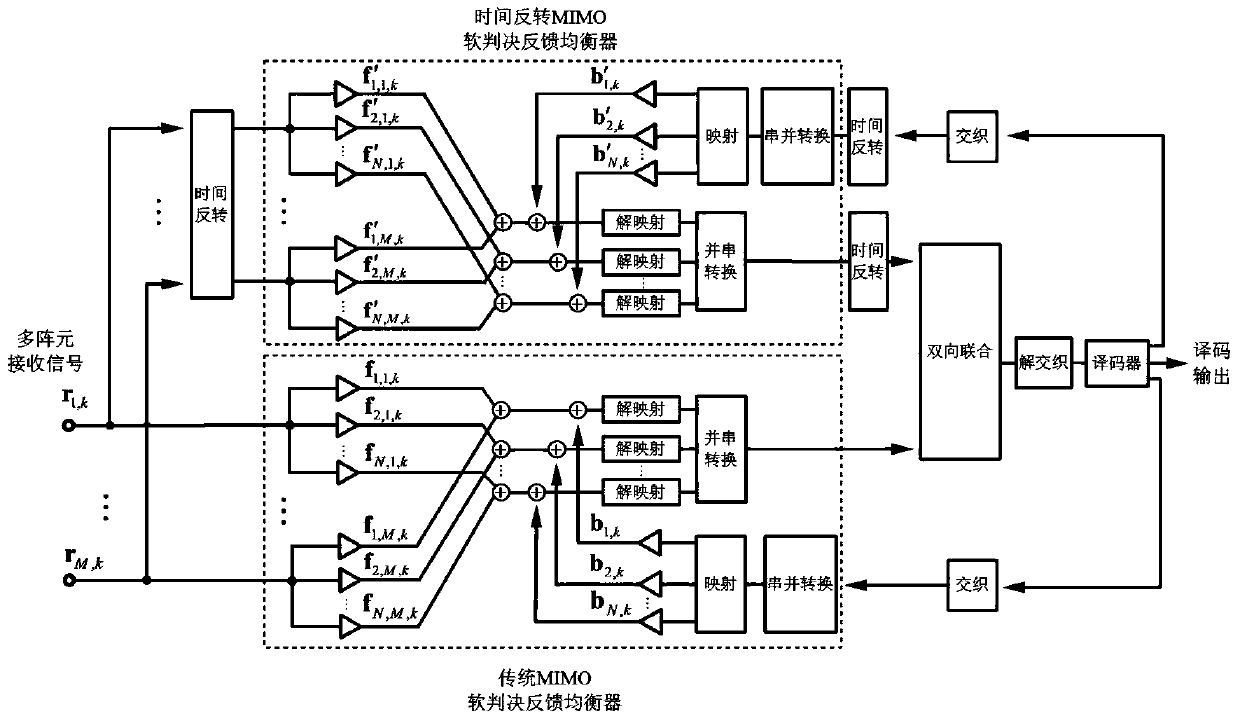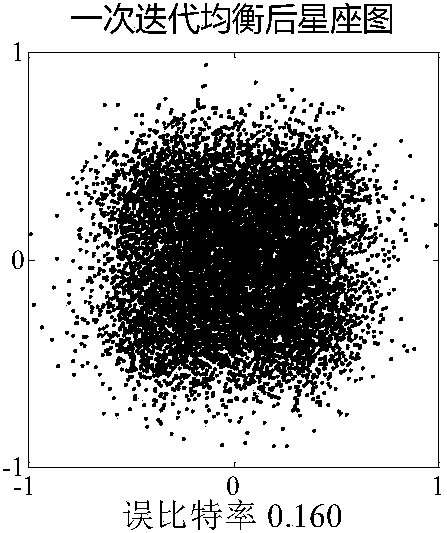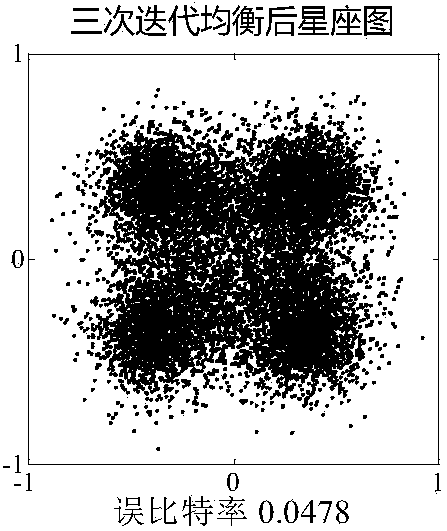Bidirectional Turbo Equalization Method Based on Direct Adaptation in Multiple-Input and Multiple-Output Systems
A multi-input multi-output, equalization method technology, applied in the direction of diversity/multi-antenna system, transmission system, radio transmission system, etc., to achieve the effect of improving algorithm efficiency, reducing bit error rate, detection accuracy and algorithm efficiency
- Summary
- Abstract
- Description
- Claims
- Application Information
AI Technical Summary
Problems solved by technology
Method used
Image
Examples
Embodiment Construction
[0036] The present invention will be further described now in conjunction with accompanying drawing.
[0037] Problem Description
[0038]In a MIMO system, assuming that the number of transmitting array elements is N and the number of receiving array elements is M, the underwater acoustic channel is modeled as a finite channel impulse response, and the noise is additive white Gaussian noise (AWGN). Received signal r of m array elements m,k for:
[0039]
[0040] Among them, s n,k is the transmitted signal of the nth array element at the kth moment, h n,m,l-k is the channel impulse response between the nth transmitting element and the mth receiving element at time l-k, v m,k is the Gaussian white noise superimposed on the mth receiving array element at the kth moment.
[0041] It can be seen from formula (1) that in a MIMO system, if you want to distinguish each transmitted signal from the received signal, in addition to eliminating inter-symbol interference (the second...
PUM
 Login to View More
Login to View More Abstract
Description
Claims
Application Information
 Login to View More
Login to View More - R&D
- Intellectual Property
- Life Sciences
- Materials
- Tech Scout
- Unparalleled Data Quality
- Higher Quality Content
- 60% Fewer Hallucinations
Browse by: Latest US Patents, China's latest patents, Technical Efficacy Thesaurus, Application Domain, Technology Topic, Popular Technical Reports.
© 2025 PatSnap. All rights reserved.Legal|Privacy policy|Modern Slavery Act Transparency Statement|Sitemap|About US| Contact US: help@patsnap.com



